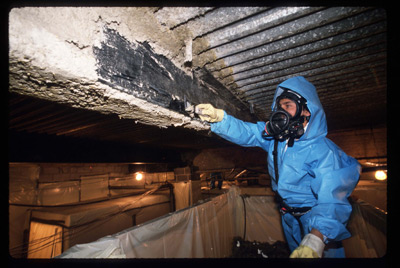A/C Mold Remediation Providers
Residential HVAC Mold Removal Solutions
A Plus Enviro-Services domestic air duct and vent cleaning experts are certified and trained in residential duct cleaning and HVAC system mold cleansing and repair. We supply specific residential HEATING AND COOLING duct and vent cleaning, mold removal, and other cleaning services. Our objective is to use budget friendly, academic, sincere, regional and high quality help to our residential customers by enhancing their indoor air quality, energy efficiency, and safety. Did you understand airborne contaminants are pulled into the duct whenever the heating & cooling system runs. In time, these pollutants increase inside the ductwork, forming an ideal breeding ground for mold, bacteria, fungi, and other microorganisms.

How We Do It
The existence of microbial growth (mold) in an A/C system is a typical problem and a variety of elements can add to the microbial growth. The HVAC system, consisting of piping and drain pans, can be sources of microbial development. An elevated mold condition can trigger several side effects with the most common problem being allergy signs. The items new is that generally mold contamination in A/C systems and air vents are restricted to small locations.
Cleaning up is usually not extremely complicated. Do not lose your cash with unqualified companies and fraudsters. Call us for a free and educational quote today. Strong Acid Water Sanitizer A Plus Enviro-Services uses a strong acidic water as a sterilizing representative since it's natural, completely safe for people, family pets, and the environment. This strong Acidic Water is an electrolytic water with electrical potential, which indicates that its chemical decomposition is produced by https://en.wikipedia.org/wiki/?search=Mold inspection passing an electrical current through a liquid or service containing ions. This includes the hypochlorous acid (SDS) generated from an anode when electrolysis happens. It is made by using an electrolysis enhancer to faucet water, this in itself is not a chemical.
Strong Acidic Water 2.5 pH works as an antifungal, antibacterial, and an antiviral representative. This water eliminates germs within approximately 30 seconds, and since of this the water is more powerful than popular disinfectants and it has multi-purpose usage. Strong Acidic water was approved for decontaminating foodstuff in June 2002, in accordance with the Food Health Law, under the name hypochlorous acid water.
Find out more Why Pick Us A Plus Enviro Provider Inc. DBA Duct Cleaning Plus is completely certified, bonded and insured. What our clients are saying We can extremely recommend them as a super friendly and expert specialist who assisted us greatly https://asbestossurveypros.com/contact/ with a current evaluation of our house's air duct/vent system.
Indoor mold Wikipedia
Fungal growth that develops on wet products Indoor mold on the head jamb of the window in a multi-storey building. Mold (American English) or mould (British English), likewise often described as mildew, is a fungal development that develops on wet products. Mold is a natural part of the environment and plays a fundamental part in nature by breaking down dead organic matter such as fallen leaves and dead trees; inside your home, mold development should be prevented. Mold reproduce by means of small spores. The spores resemble seeds, however undetectable to the naked eye, that float through the air and deposit on surfaces. When the temperature level, wetness, and readily available nutrient conditions are correct, the spores can form into new mold colonies where they are transferred.
Direct exposure to high levels of mycotoxins can lead to neurological issues and death. Extended direct exposure (for example, everyday direct exposure) can be particularly damaging. Mycotoxins can persist in the indoor environment even after death of the fungis. They can comply with dust particles and can spread out through the air connected to these dust particles or spores. [3] There should be extremely specific temperature and humidity conditions in order for fungis to produce mycotoxins.
Symptoms [modify] Signs of mold exposure might consist of nasal and sinus blockage; runny nose, eye inflammation; itchy, red, watery eyes, respiratory problems, such as wheezing and trouble breathing, chest tightness, cough, throat irritation, skin irritation (such as a rash), headache, and persistent sneezing.
Immune-compromised individuals and individuals with persistent lung diseases, such as obstructive lung disease, may get serious infections in their lungs when they are exposed to mold. These people must keep away from areas that are likely to have mold, such as compost heap, cut yard, and wooded areas.
Asthma [modify] Infants might develop respiratory symptoms as a result of exposure to Penicillium, a fungal genus. Signs of mold-related breathing issues in a baby include a consistent cough or wheeze. Increased exposure increases the likelihood of establishing breathing symptoms throughout the very first year of life. Research studies have indicated a correlation between the probability of establishing asthma and exposure to Penicillium.
Causes and growing conditions [modify] Mold is found all over and can grow on almost any compound when wetness exists. They recreate by spores, which are carried by air currents. When spores land on a damp surface ideal for life, they begin to grow. Mold is typically discovered inside at levels which do not impact most healthy individuals. Since common building materials can sustaining mold growth and mold spores are common, mold development in an indoor environment is typically associated with water or moisture direct exposure and may be brought on by insufficient drying of floor covering materials (such as concrete). Flooding, leaky roofing systems, building-maintenance or indoor-plumbing problems can cause interior mold growth. Water vapor typically condenses on surface areas cooler than the moisture-laden air, allowing mold to thrive. [citation required] This wetness vapor travels through walls and ceilings, usually condensing during the winter in climates with a long heating season. Floors over crawl areas and basements, https://dandscarpetcleaning.com/mold-remediation-overland-park-271724bc/ without vapor barriers or with dirt floors, are mold-prone. The "doormat test" detects moisture from concrete pieces without a sub-slab vapor barrier.